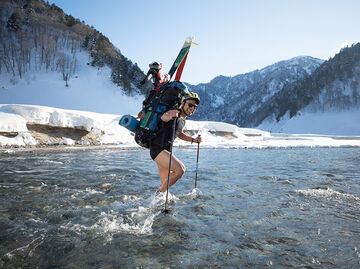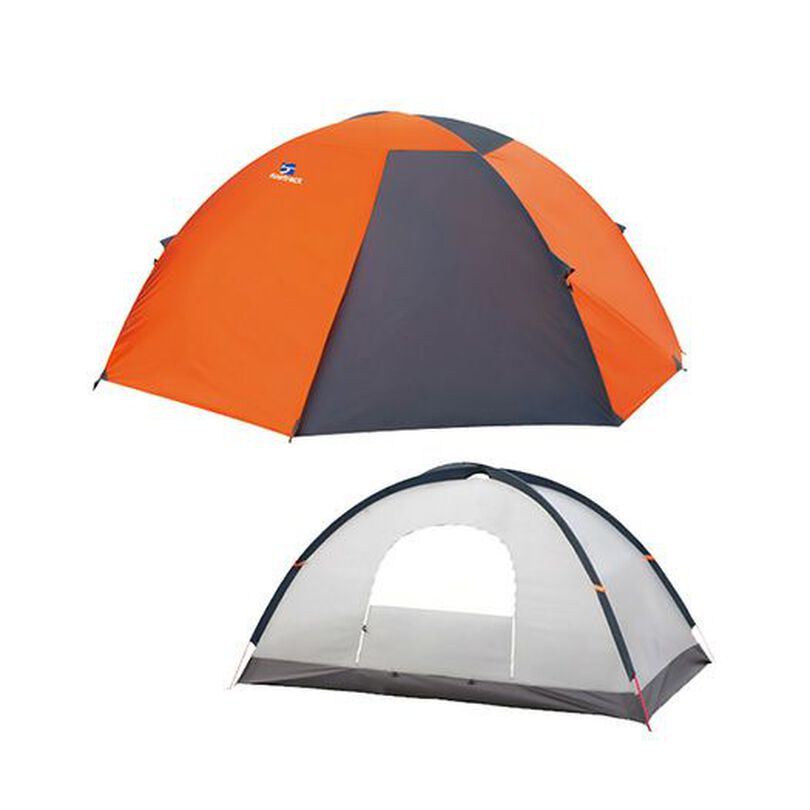Crossing the Kurobe had long been on my bucket list. That opportunity finally came in late March 2025, when snow conditions and weather aligned just right.
The route we chose was the historic “Sarasara-goe,” said to have been taken by warlord Narimasa Sassa during Japan’s Sengoku (Warring States) period (1467–1603). In the depths of winter, he crossed the high alpine to secretly seek aid from Tokugawa Ieyasu—evading enemy eyes along the way.
Steeped in romance and legend, this classic route has captivated generations. We set out to follow it—on skis.
By: Ryota Yamashita
Photos: Kinugawa & Yamashita
Trip Dates: March 20–22, 2025
DAY 1: From Ogizawa to Kurobe Dam
After work, we left the office carpooling with another group aiming for the east ridge of Mt. Kashimayari. We got off at Shinano-Omachi and took a taxi to the Hinata Gate. From there, we walked along a cleared and paved road up to Ogizawa.
To cross the Kurobe River and manage the paved section, I brought along my winter surf boots that I usually wear for cold-water surfing to minimize the gear. While the soles are reinforced with rubber, the boots themselves are thin and not ideal for long walks. Thankfully, the distance was only a few kilometers, so it was manageable. My partner Kinugawa opted for tabi-style shoes instead.
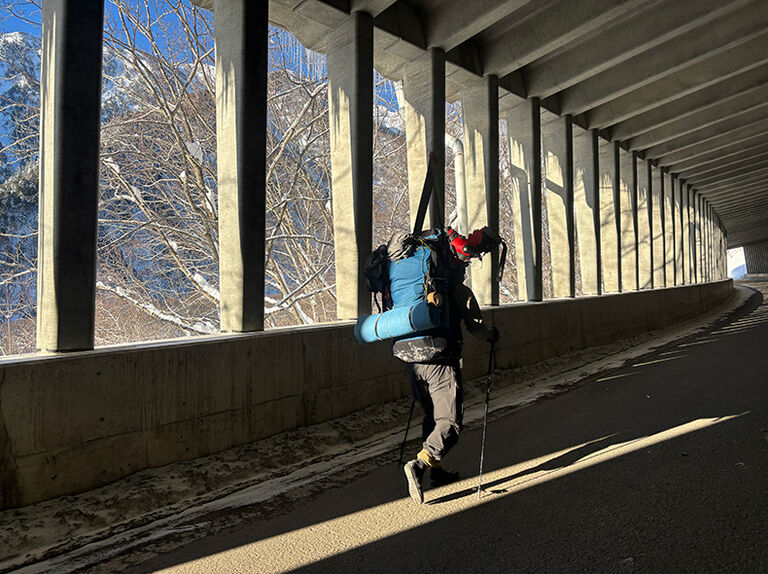
Approach on paved road. With heavy load.
After a short break at Ogizawa, we started skinning up toward Harinoki Pass. Several other parties were also setting off, each with their own plans.
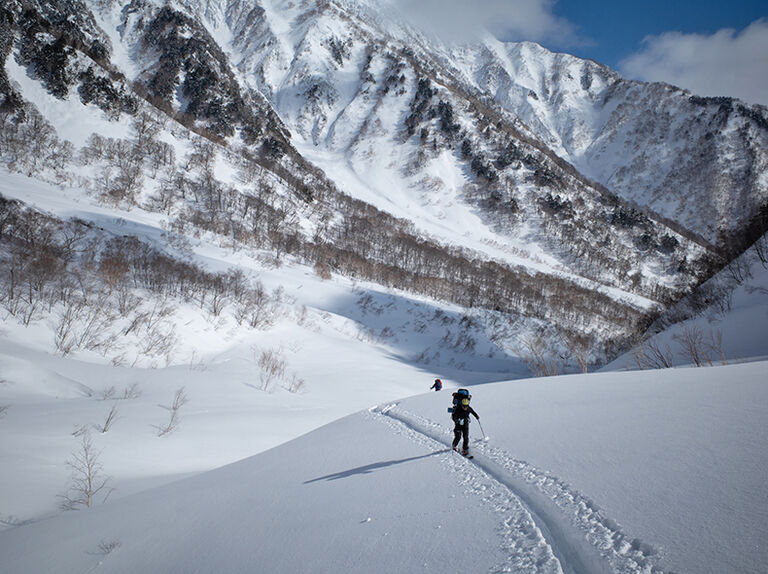
Start of the hike up.
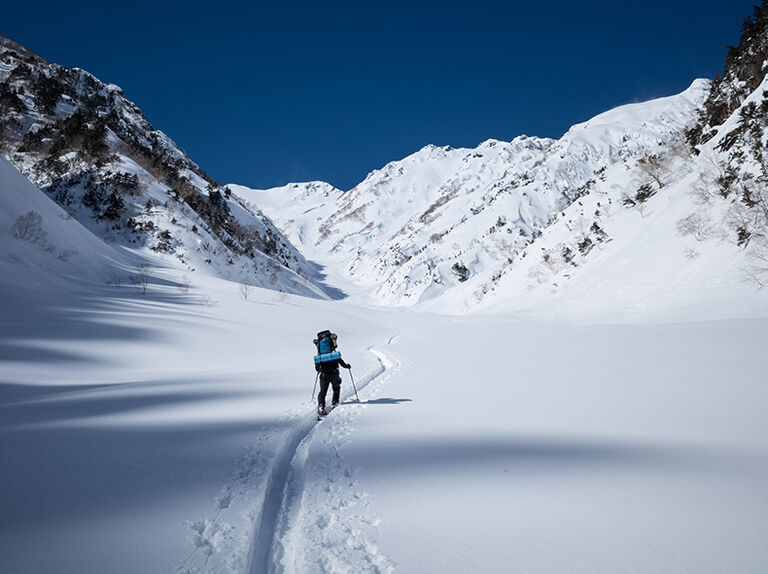
A view that quietly draws you in.
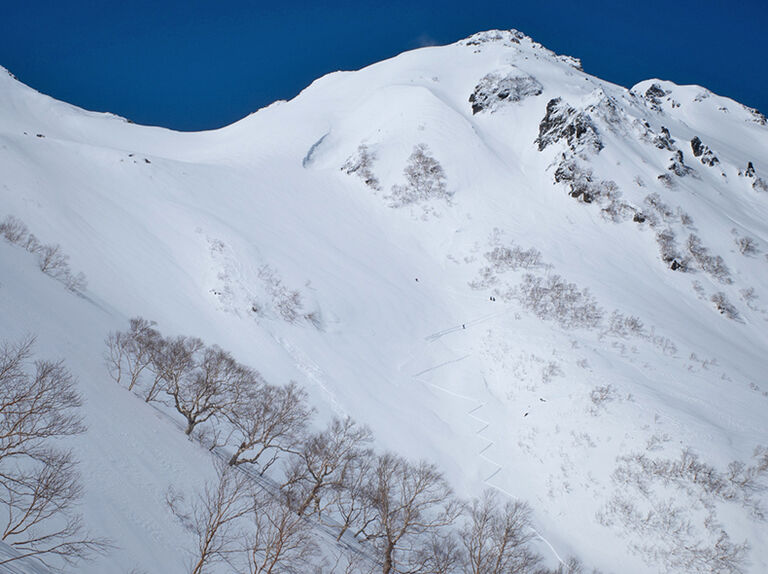
Looking back, we saw a beautiful skin track tracing its way up the slope.
At the pass, the view opened up to the Ushiro-Tateyama range and the peaks of Yari and Hotaka. It was the kind of breathtaking scenery that made you want to stop in your tracks.
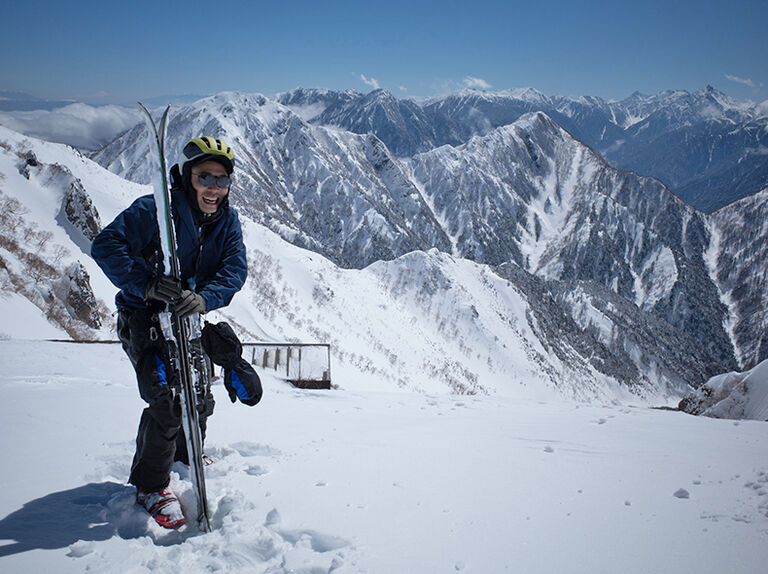
At Harinoki Pass
From the 2,536-meter pass down to the 1,863-meter confluence, we had hoped for a smooth, non-stop descent. But the snow was heavy and crusted, making turns difficult. At one point, a broken gully forced us to shoulder our skis. Progress was slower than we’d expected.
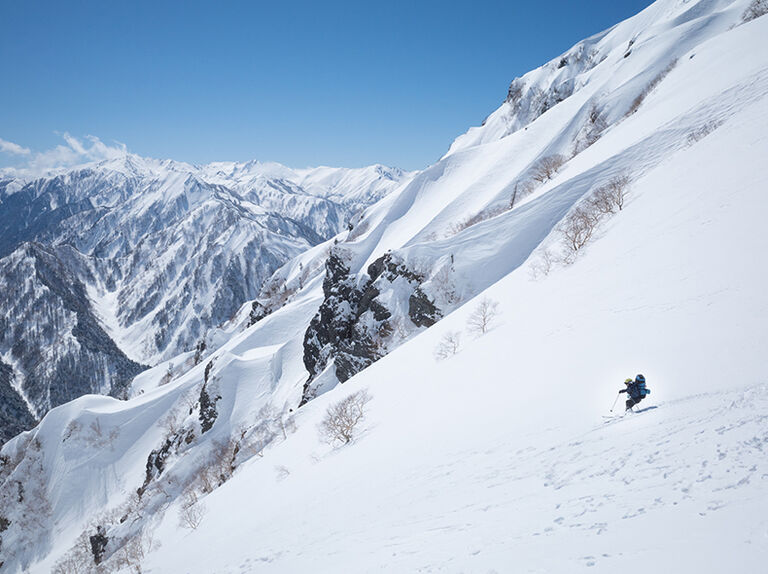
The heavy, crusty snow sure burned our legs
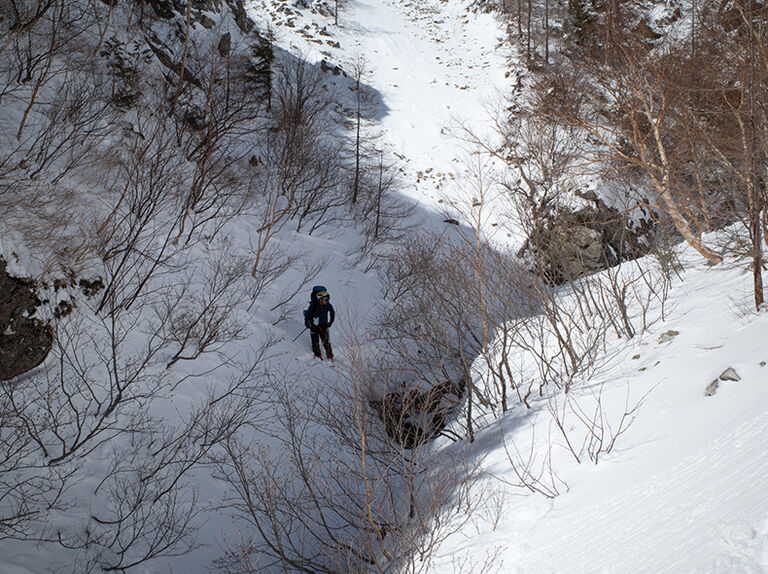
We had to take off our skis in a few spots along the way.
Even after merging into the Harinoki Valley, the terrain remained mellow and the snow heavy. We pressed on with determination, but as we approached the Kurobe Dam, the slope leveled out completely, forcing us to reattach our skins. Along the way, we crossed several snow bridges and forded the stream multiple times.
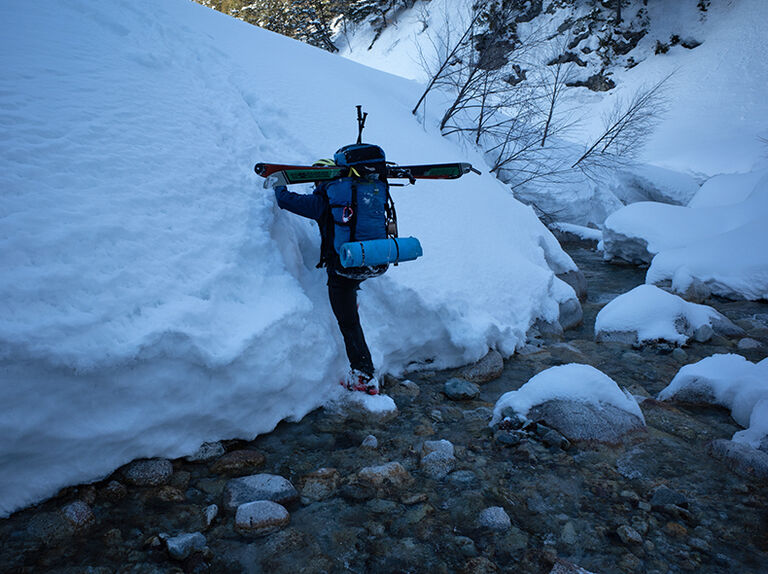
By the time we emerged from the valley, the late afternoon sun was filtering in from the west, casting a warm light across the snowy plain. The view of the open snowfield and the winding Kurobe River was stunning. The silhouettes of standing dead trees quietly hinted that we were walking along the lakebed.
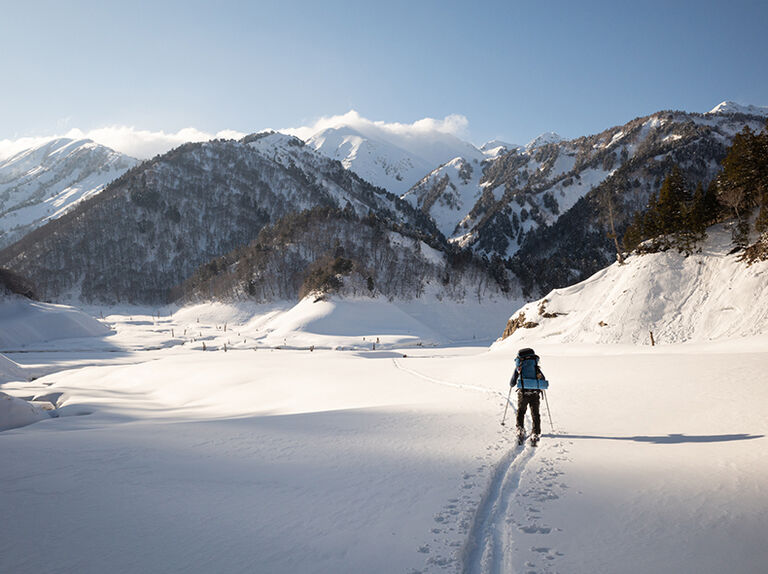
As we exited the valley, the Kurobe Dam finally came into view!
Crossing the Kurobe River, the snowmelt was icy cold, sharp enough to sting our legs.
We thought we were done after the first crossing, but another branch lay ahead, and we ended up fording the river twice.
To minimize getting wet, Kinugawa crossed in his Elemental Layer.
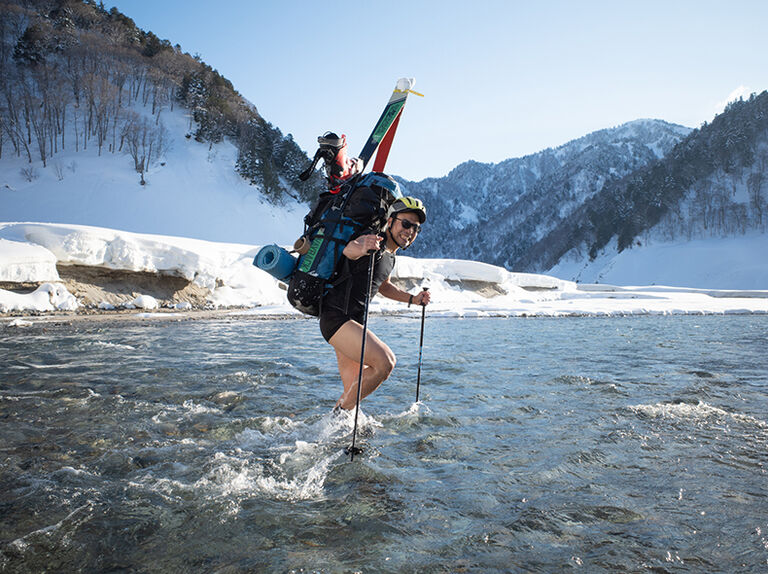
Kinugawa fording the first branch of the river in his full Elemental Layer setup. Painfully cold!
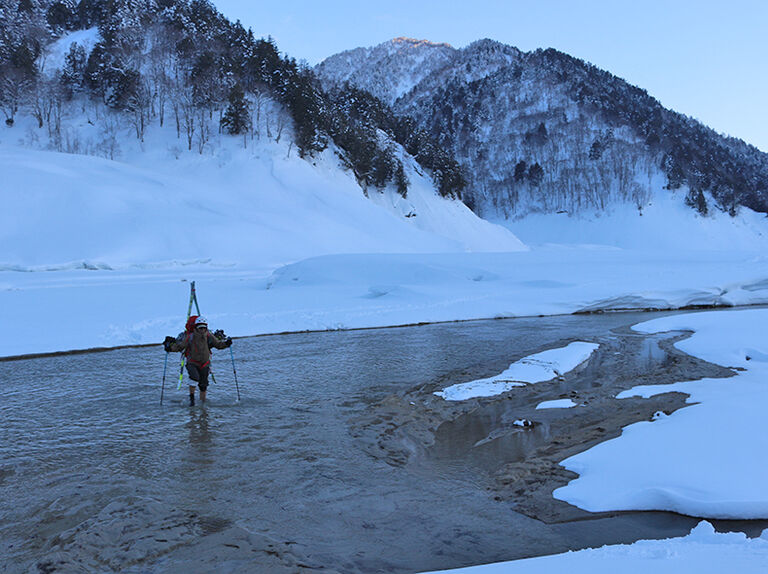
Crossing the second branch. My neoprene surf boots kept my feet warm and comfortable, but the muddy riverbed made it easy to lose footing.
We finished the day’s approach before nightfall and set up camp on the lakebed overlooking Nakanodani. After debating between using the rain fly or the snow fly, we opted for the snow fly. It blocked the wind entirely and kept us comfortably warm through the night.
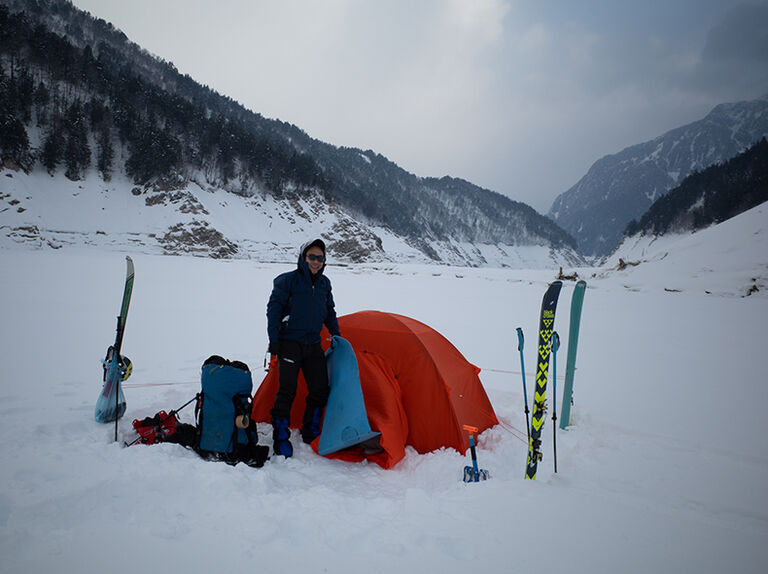
Wrapped up for the day
—A Note on Winter Camping Meals—
Lately, I’ve settled into a reliable meal routine for winter camping. Dinner usually consists of dried alpha rice paired with a freeze-dried topping, while breakfast is a bowl of udon noodles with slices of mochi. Powdered mashed potatoes also work well as a side dish. There’s still plenty of room to improve the setup, and I continue to explore new options.
For melting snow, I start with a high-output gasoline stove. Once I have enough water, I switch to a Jetboil for efficient boiling. I always prepare water for the next day and for breakfast the night before, which makes the morning much easier. Because setting up and packing away the gasoline stove takes more time, I rely on the Jetboil for morning use.
DAY 2: Over the Zara Pass
The next morning, after a short walk across the lakebed, we began the long ascent from Nakanodani toward Zara Pass.
With roughly 900 meters of elevation gain ahead, we made sure to move quickly through the lower chute section while the snow was still firm from the morning freeze.
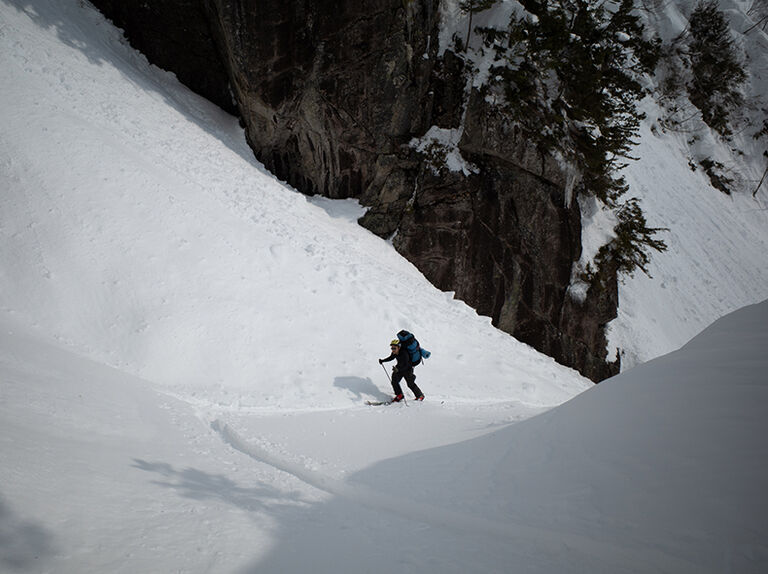
We moved quickly through the chute
As we approached the ridgeline, the wind picked up, making it hard to stay on our feet.
At Zara Pass, the headwind was so strong we couldn’t make any forward progress. We took cover behind a rock, strapped on our crampons, shouldered our skis, and crawled ahead on all fours.
After climbing down about 50 meters below the ridge, the wind finally eased, and we could start getting ready for the descent.
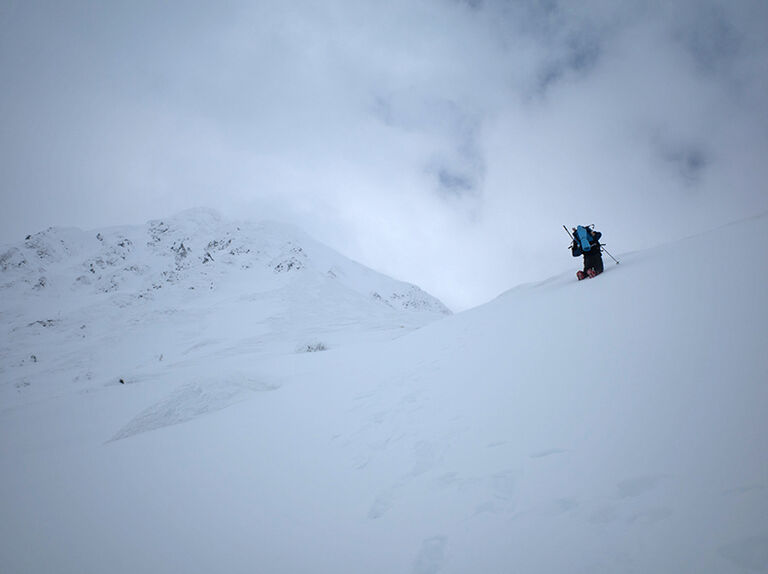
Blasting wind forced us to climb down.
The snow on the north face was in excellent condition, making for a smooth and satisfying descent. We then followed the Joganji River, crossing between the left and right banks, until we reached a flat plateau that made an ideal campsite.
In sharp contrast to the wind-blasted ridgeline, the air was calm and pleasantly warm. With sweeping views of the Tateyama Range, we enjoyed a relaxed meal outdoors. It was a rare and truly luxurious moment in the mountains.
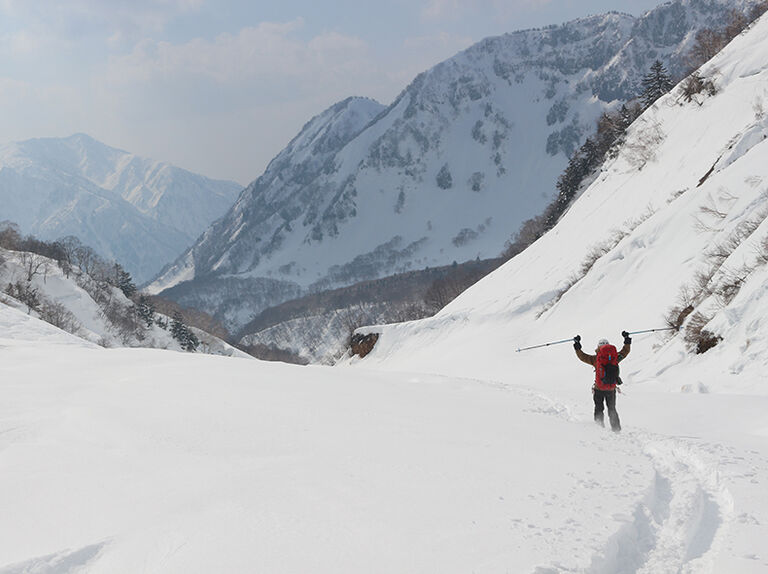
To the Joganji River
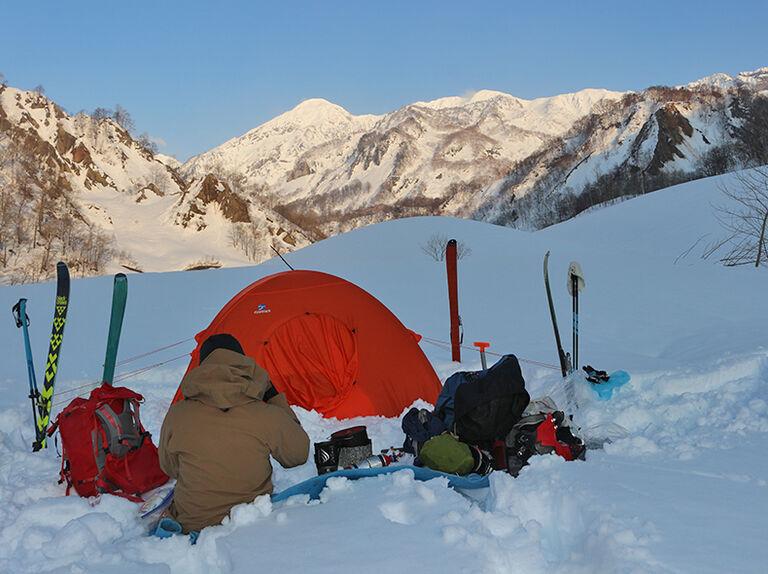
That's it for today
Inside the tent, we looked back on the day’s challenges and exchanged ideas on how to improve our prototype clothing and gear.
Kinugawa, from the product development team, carefully took notes as we talked. It felt like a quiet search for hidden treasures—small insights that could lead to future innovations.
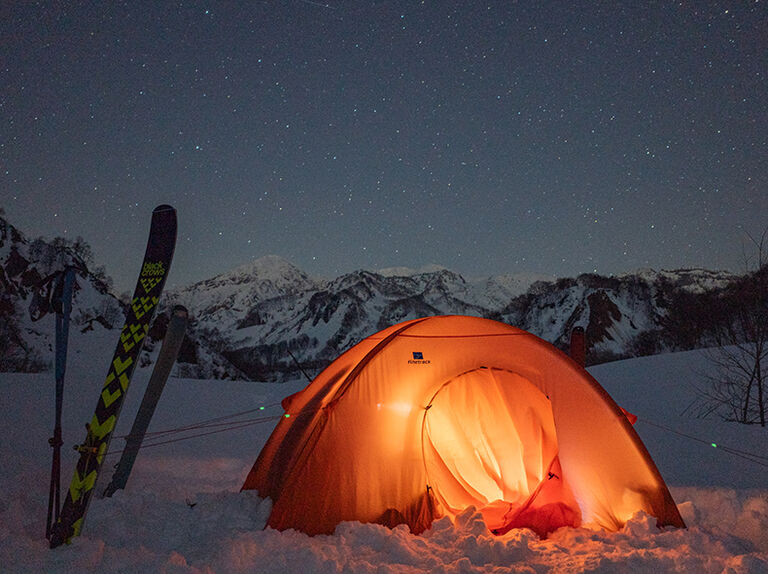
A sky full of stars
DAY 3: Toward the Finish at Tateyama Station
The final day was all about making our way to Tateyama Station.
While many complete this route in one or two days, we opted for a three-day trip. That extra time gave us both mental and physical breathing room, making for a more relaxed and fulfilling experience.
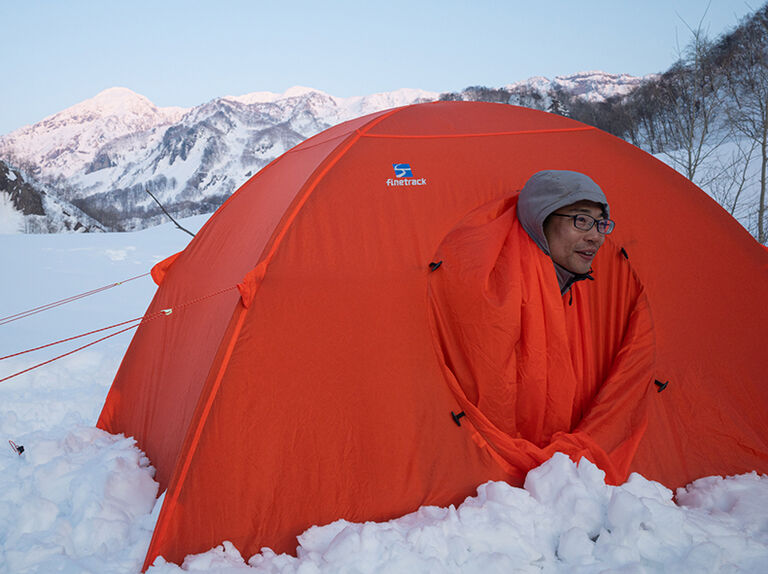
Good morning!
The slope along the Joganji River gradually flattened out, turning skiing into more of a pushing effort. Eventually, we reattached our skins, but the spring snow began clumping and sticking to them. Fortunately, I had packed some skin wax, which made a big difference.
Another common issue in colder conditions is when snow clings to the adhesive side of the skins, making it hard to get them to stick. To prepare for that, I always carry four ski straps. They're useful not only for securing skins but also come in handy in a variety of other situations.
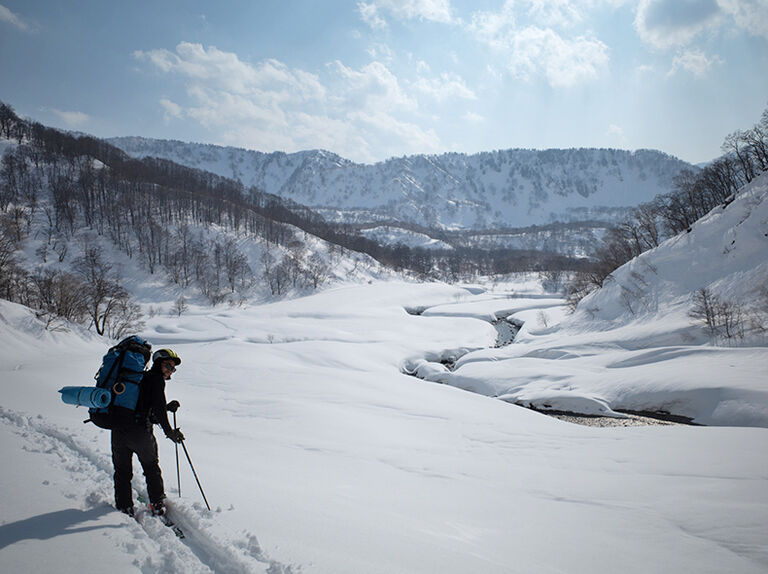
Pushing hard along the winding river, powering through each bend!
As the sun climbed higher, rising temperatures triggered avalanches on both sides of the valley. We pushed forward in silence, focused and determined to get through safely.
And then, at last, Tateyama Station came into view — bringing a wave of accomplishment that words could hardly capture.
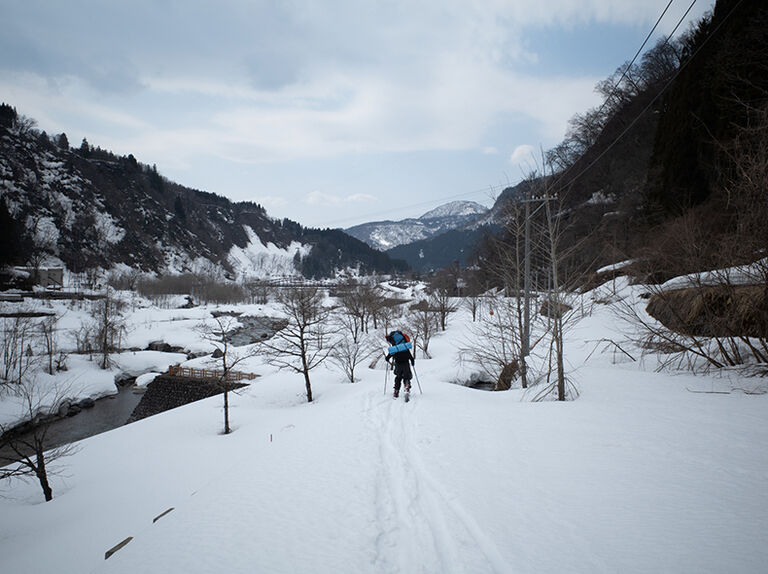
Tateyama Station in sight. Just a few kilometers left of the 45 km journey.
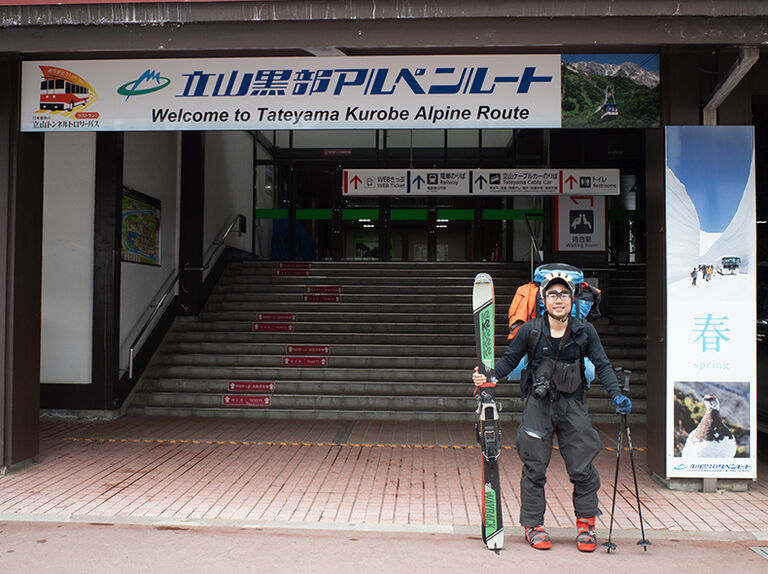
Tateyama Station in sight. Just a few kilometers left of the 45 km journey.
With time to spare, we enjoyed a relaxed train ride back to Kobe.
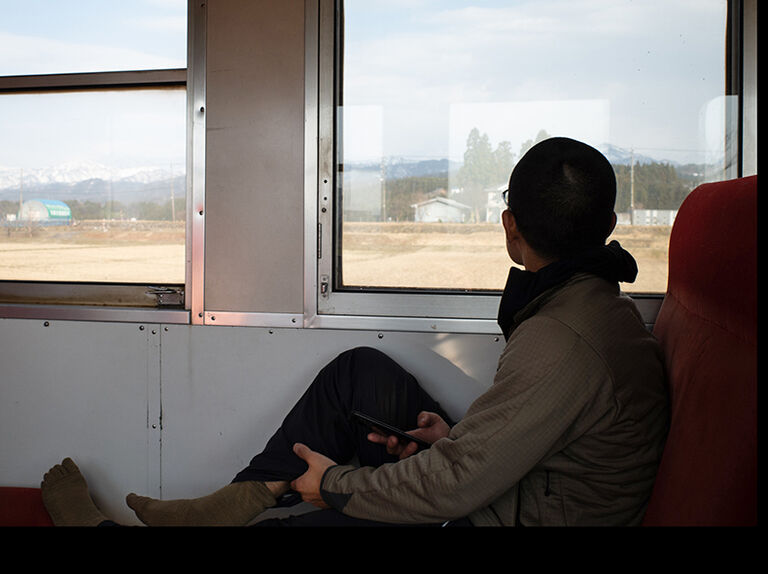
Soaking in the afterglow of the three-day journey, we headed home while dreaming up ideas for the next adventure.
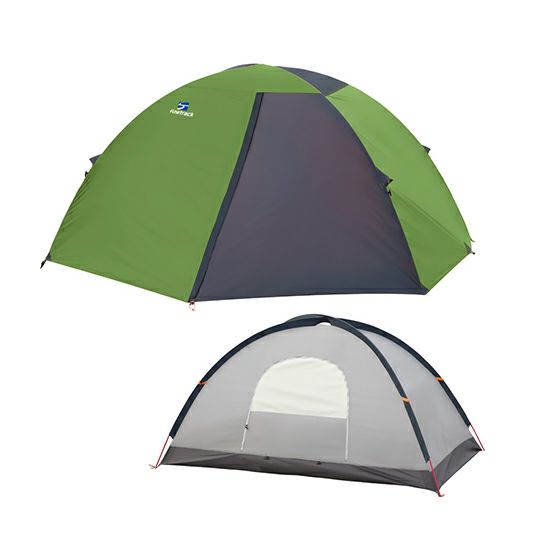
MVP Gear Pick for the Trip
Kamina Dome 2
A true four-season tent that’s lightweight, compact, and versatile with a range of optional add-ons. Perfect for those who want to explore year-round across different environments. The snow fly can be pre-attached and packed down at home, making for a fast and easy setup once you're out in the field.
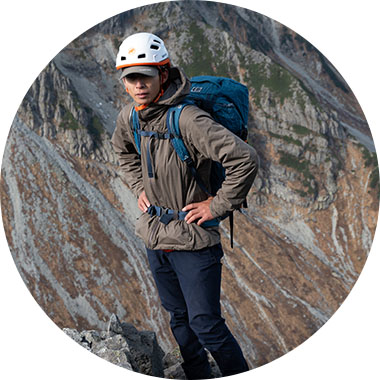
Written by: Ryota Yamashita, Marketing
Joined Finetrack in 2021
Lately, I’ve been drawn to Japan’s remote islands.
Rebun, Rishiri, Yakushima, Tanegashima, Iriomote, Yonaguni, Hateruma—each one has been unforgettable. With mountains, rivers, and ocean all packed into a compact landscape, they’re ideal for outdoor adventures.
From skiing and surfing to hiking, biking, and fishing, these islands offer it all. Their distinct cultures and sense of escape make every visit feel like stepping into another world.
The island journey continues...
